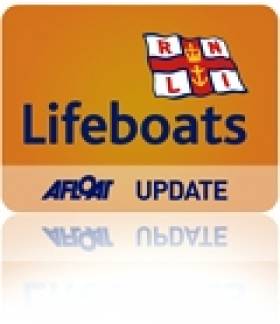Displaying items by tag: LoughDerg RNLI
Lough Derg Lifeboat Assists Vessel Aground
This afternoon at 15.47hrs, Lough RNLI Derg lifeboat Toshiba Wave Warrior launched to assist eight persons on board a 31ft cruiser aground on Lough Derg.
At 15.30hrs on Monday afternoon August 2, Derg RNLI lifeboat was requested to launch following a sighting of a vessel aground off Crane Island close to Church Bay on the south-western shore of Lough Derg. The lifeboat with helm Eleanor Hooker, Peter Clark and Colin Knight on board, launched at 15.47hrs. Winds were south-westerly, Force 2 to 3. The lifeboat was alongside the casualty vessel at 15.58hrs and found all passengers to be safe and unharmed. They were asked to put on their lifejackets. The RNLI Lifeboat Training Officer, Fergal Kerney was afloat at the time and stood-by to reassure the persons on board until the lifeboat arrived. A RNLI crew member climbed aboard the cruiser and after he established that the vessel was not holed or damaged, it was taken off the rocks and towed out into safe water, where another check of steering and rudder was carried out. The cruiser then continued on its journey.
Lough Derg RNLI Lifeboat Operations Manager, Charles Stanley-Smith commended the "the swift response the lifeboat crew and the professional manner in which the rescue was carried out".
The lifeboat returned to station and was ready for service again at 16.40hrs
Related Safety posts
RNLI Lifeboats in Ireland
Safety News
Rescue News from RNLI Lifeboats in Ireland
Coast Guard News from Ireland
Water Safety News from Ireland
Marine Casualty Investigation Board News
Marine Warnings























